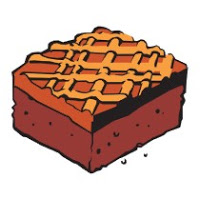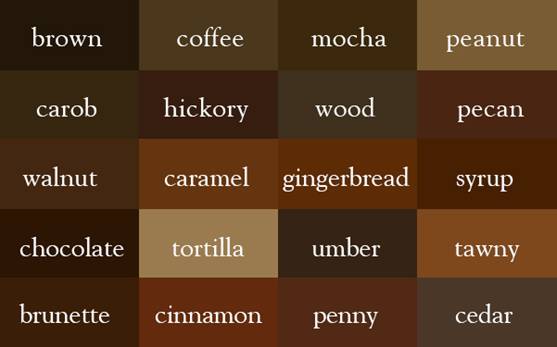
Salty Sam’s Fun Blog for Children
Number 388
Peat Bogs
Hello Everyone

Captain Jack and l went for a walk in the Rocky Bay Woods behind Auntie Alice’s cottage this week.
The children were busy picking fruit and vegetables in Auntie Alice’s garden and Auntie Alice was working hard in the kitchen.
We were harvesting another crop as it were.
We were looking for logs to take back to the cottage to be used as fuel and twigs to be used as kindling.
Whenever a strong wind blows through the woods a few bits and pieces of dead wood will be brought down.
This very often happens in October when strong autumn winds blow through, but it can happen at any time of the year too.
The twigs and branches are left on the woodland floor.
We collect them up and take them back in a large wheelbarrow.
Then we stack them at the back of the cottage in a shed-like structure called a wood store.
They are left in there to dry out really well which makes them better to use.
Some people dry their logs out for up to two years. Then it is wood that is called ‘well-seasoned’.
lf you collect wood that is dead, like we do, it is already quite dry and brittle to start with. But we still stack it up and leave it outside for a while before it is used.
lt is always nice to have a high pile in store. You never know how cold the winter will be or how long it will last. And it is amazing how much debris we can find to bring back in even just a couple of hours.
Throughout history, people have harvested fuel for the winter before it arrives – because you wouldn’t want to go out collecting fuel in miserable, cold, winter weather. You would want to think ahead and have it ready to use so that you could stay inside on chilly days.
People used to go onto common land and collect it for themselves ‘by hook or by crook’.
Auntie Alice has a couple of wood burning stoves and the fuel that we collect to put in it is free. Not everyone is as lucky as we are. They have to pay for their logs. They can buy them at petrol stations in big bags and carry them home in the boot of their car or they can have bags of logs delivered by companies who sell them on the lnternet.
Wood is what is called a bio-fuel.
Lots of people think that using biomass fuels is a good plan for the future. lt is an environmentally-friendly way to produce heat in the home. Some schools use biomass fuels in their boilers.
Wood is called a carbon-neutral fuel. That means, as you use it and cause pollution; other trees are growing and producing oxygen to balance out your carbon emissions.
Of course, there always have been lots of people who needed fuel to heat their cottages that lived in places that did not have forests. Sometimes there were hardly any trees at all.
But there was something else they could use to fuel their fires and that was peat.
You will find peat on moorland or in bogs. This land is covered with very low-growing plants. Sometimes there are pools where lots of insects like beautiful dragonflies can live.
Peatlands can be found all over the world in many countries.
Peat is a special kind of soil (or turf) which is made from a build up of partially-decayed plants. Peat is composed of wetland vegetation like mosses and sedges that have not properly decayed, and it holds a lot of water.
The peat that we have, has taken many thousands of years to accumulate.
You can’t make a peat bog in a hurry!
ln fact, they grow at about 1mm every year.
Peat is still harvested in places like the Finland, lreland and the Scottish lslands by cutting the turf into blocks with a sharp spade. lt is then stacked and left to dry.
The blocks can be put straight onto a fire to fuel it without any more processing.
Some Scottish whiskeys have a particular taste because peat fires are used to dry the malted barley which is an ingredient used in the whisky’s production.
You may remember the heath-land fires that broke out on the peat moors all over Britain in the summer heat wave of 2018.
There was no rain for many weeks and the vegetation and earth had become very dry.
The fires burned for many days and sometimes weeks.
They were so difficult to put out because the earth under the surface was burning as well as the heather on the top!
This was because of the combustible nature of the peat.
Many square miles were affected and the smoke could be seen from space.
This was an eco-disaster.
The peatland ecosystem is the most efficient carbon sink that you can find.
That means that peatlands lock carbon up inside them. This is very important to help global warming because it prevents it getting into the atmosphere.
Peat bogs are internationally important, 10-15% of the world’s blanket bogs are in the UK.
There is more carbon locked up in British blanket bogs than all the forests in north-west Europe.
Even so, 94% of them have been destroyed or damaged.
They have a covering of sphagnum moss which stops them from drying out. The landscape may look a bit bare compared to some others, but the groundcover attracts many invertebrates and then this in turn attracts many birds who will like feeding on them.
There are different species of moss. The ones with the fattest structures will hold up to 10 times their own weight in water.
Bogs are threatened by acid rain and overgrazing and much damage has been done to them in recent centuries.
They were harvested and sometimes even completely drained so that they could be used for agriculture.
A lot of gardeners nowadays will not buy peat-based composts and will opt for other types to try to help prevent the bogs being further depleted. And actually, from 2024, peat products are going to be banned – well in Britain anyway.
Materials such as coir, composted bark and wood fibre can all be used instead. Bags are clearly labelled to let you know what you are buying.
Anyway, at the end of our long day, Auntie Alice was really pleased with all the work everyone had done and treated us all to a slap up tea!
lf you like my blog, please support it by telling all your friends and followers about it.
Thank you!
And see you again next Fun Friday!
Love and kisses
Salty Sam

www.christina-sinclair.com


Bill and Bob’s Joke of the Week![]()
![]()
Bob: Why did the gardener plant some light bulbs?
Bill: l don’t know. Why did the gardener plant some light bulbs?
Bob: Because he wanted to grow a power plant!

Salty Sam © Christina Sinclair 2015
Unauthorized use and/or duplication of material from this blog without express and written permission from this blog’s author and owner is strictly prohibited.
Links may be used to www.christina-sinclair.com

Picture Gallery
 A pile of peat left to dry
A pile of peat left to dry
 Heather flowers
Heather flowers
 Peat builds up in layers
Peat builds up in layers


 THE SALTY SAM NEWS DESK
THE SALTY SAM NEWS DESK

There is a busy production line going on in Auntie Alice’s cottage at the moment!
The children are out in the garden harvesting crops like green beans, berries and currants and Auntie Alice is in the kitchen coordinating operations and processing the food coming in.
The garden is blooming and everything is growing well.
The berries and currants that are taken to customers have to be packed into punnets (small boxes) so that they don’t get squashed as they are transported.
Everything else can be put into larger boxes or even bags.
Auntie Alice has stepped up production in her garden so that she can take plenty of produce to her customers; but she also has to make stores for her own cupboards too.
She boils up fruit with sugar and citric acid to make fruit cordials that will be stored in bottles, and lots of fruit jams as well.
Some fruit and vegetables she freezes, and some she turns into chutneys and relish.
Some fruit can be bottled in syrup and some fruit and herbs can be air or oven-dried.

The children are sharing in the spoils of success and they keep a record of the money they are accumulating in their building society passbooks.
Many years ago, children were expected to help with bringing in the harvest before they all went to school instead.
The children don’t have to work but they are all really enjoying themselves – and a lot of playing about is going on as well I think.
Like Winnie the Pooh once said.
We didn’t know that we were making memories. We were just having fun.

*********************
TO ADVERTISE ON THIS BLOG
PLEASE CONTACT:
christina.sinclair.ads@aol.co.uk
*********************

 Quick Quiz
Quick Quiz
Can you fill in the missing letters to find different types of brown?
- t _ _ _ _ _ _ _ _a
- c _ _ _ _ _ _ _ e
- n _ _ _ _ g
- c _ _ _ _ e
- o _ _ _ _ _ l
- w _ _ _ _ t
- c _ _ _ _ _ l
- g _ _ _ _ r
- s _ _ _ a
- p _ _ t

A brownie



lt’s the Weekend!

HOW TO MAKE A GlNGERBREAD MAN FlNGER PUPPET
This gingerbread man finger puppet is so cute.
You could knit a whole family of them.
GINGERBREAD MAN BODY (KNIT ONE)
Using 4mm knitting needles and brown dk yarn cast on 10 stitches
Knit 2 rows of garter stitch
Knit 18 rows of stocking stitch
Don’t cast off – leave a length of yarn to pull through your stitches
Embroider a face and buttons at the centre front using white yarn to look like icing.
Pull the stitches in at the top of the head and using over-sew stitching and right sides together sew up the back seam
Turn the body the right way out
ARMS (KNIT TWO)
Using 4mm knitting needles and brown dk yarn cast on 6 stitches
Knit 4 rows of stocking stitch
Don’t cast off – leave a length of yarn to pull through your stitches
Pull the stitches in at the top of the hands and using over-sew stitching and right sides together sew up the back seam
Attach the arms to the sides of the body

Please note that the material on this blog is for personal use and for use in classrooms only.
It is a copyright infringement and, therefore, illegal under international law to sell items made with these patterns.
Use of the toys and projects is at your own risk.
©Christina Sinclair Designs 2015



Quick Quiz Answers
- terracotta
- chocolate
- nutmeg
- coffee
- oatmeal
- walnut
- caramel
- ginger
- sepia
- peat


More browns

Embroidery Stitches




I love your website. So much to see here.
Thank you so much for your kind comment Elizabeth. 🙂